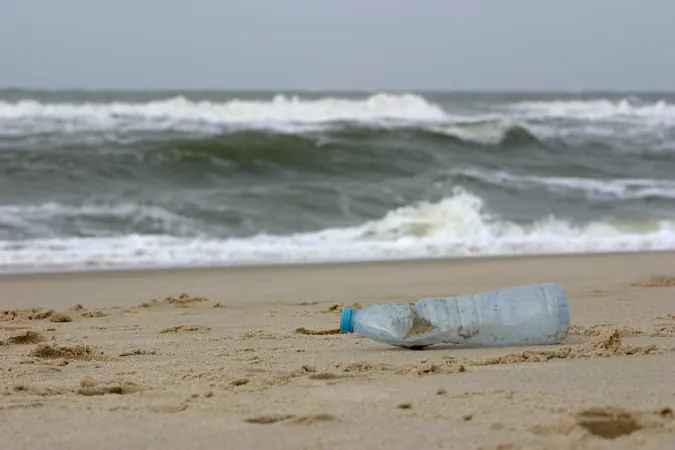
Citizen Scientists Unite for Crucial Microplastics Detection Across German Coastline!
2024-09-25
Introduction
In an alarming twist, the pervasive issue of plastic waste has reached critical levels, with German beaches now littered with microplastics—tiny plastic particles that have infiltrated our environment. While previous studies often focused on select regions, a groundbreaking citizen science initiative, "Microplastic Detectives," is making waves by pooling local efforts to provide a comprehensive overview of plastic pollution along the entire German coastline.
Collaboration with Researchers
Researchers from the renowned Alfred Wegener Institute have partnered with passionate citizen scientists to gather data that could paint a clearer picture of this environmental crisis. The project amassed a staggering 2.2 metric tons of sand samples from 71 locations along Germany's North Sea and Baltic coasts. That's an area totaling a remarkable 68.36 square meters!
Findings
Dr. Bruno Walther, who led the study, stressed the dire consequences of this pollution: "This irreversible plastic pollution is affecting species, populations, and ecosystems all along the German coast." With global plastic production set to triple by 2060 according to the OECD, the threat of increased microplastic contamination looms larger than ever.
The study, recently published in Frontiers in Environmental Science, is the first to deliver significant findings on the large-scale distribution of microplastic pollution using standardized methods. Among the 1,139 samples analyzed, a total of 260 plastic particles were identified—averaging about four particles per square meter. To put that into perspective, a 10-hectare beach could potentially harbor as many as 400,000 plastic particles!
Study Results Comparison
However, not all the news is grim. While plastic was found on 52 out of 71 beaches, the levels detected were lower than those in past studies. "If we had included smaller microplastic particles in our analysis, the concentrations would have skyrocketed,” noted Dr. Melanie Bergmann, highlighting the distinction in measurement methods.
Sampling Methodology
Interestingly, the locations of sampling were selected at random, rather than concentrating on areas where plastic often accumulates. This approach may account for the discrepancies in pollution levels.
Significance and Policy Implications
The significance of this research extends beyond mere data collection. It offers invaluable insights into the effectiveness of current policies aimed at reducing plastic waste. The findings suggest that legislative measures may have indeed led to decreased plastic bag presence on seafloors in north-western Europe over the past 25 years.
Call to Action
Yet, there’s a call to action, as experts emphasize the necessity for stronger, science-based policies. These should target comprehensive strategies for reducing, recycling, and most importantly, limiting the production of plastics in non-essential applications. Focused measures must be established to ban hazardous substances and promote the development of more biodegradable alternatives.
Volunteer Efforts and Future Plans
The enthusiasm of the volunteer citizen scientists has been a breath of fresh air in the fight against plastic pollution. Their commitment went beyond mere sampling; they spent hours on the beaches, showing dedication to this crucial environmental cause. The ultimate goal of the "Microplastic Detectives" initiative is to serve as a blueprint for more extensive monitoring programs in the future, thereby ensuring continual oversight and adjustments to combat plastic pollution effectively.
Conclusion
As we stand at this critical juncture, it becomes clear that collective action—combining scientific inquiry and community involvement—is paramount to reverse the tide on plastics and safeguard our coastal environments, tourism, and health. The pressing question now remains: Are we ready to take up the challenge?









 Brasil (PT)
Brasil (PT)
 Canada (EN)
Canada (EN)
 Chile (ES)
Chile (ES)
 España (ES)
España (ES)
 France (FR)
France (FR)
 Hong Kong (EN)
Hong Kong (EN)
 Italia (IT)
Italia (IT)
 日本 (JA)
日本 (JA)
 Magyarország (HU)
Magyarország (HU)
 Norge (NO)
Norge (NO)
 Polska (PL)
Polska (PL)
 Schweiz (DE)
Schweiz (DE)
 Singapore (EN)
Singapore (EN)
 Sverige (SV)
Sverige (SV)
 Suomi (FI)
Suomi (FI)
 Türkiye (TR)
Türkiye (TR)